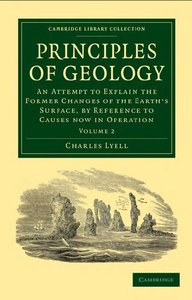The Geological Evidences of the Antiquity of Man: With Remarks on Theories of the Origin of Species by Variation By Charles Lyell
Publisher: >Cu
Sir Charles Lyell (1797-1875) is remembered today as much for his profound influence on the young Charles Darwin as for his own work as a geologist: Darwin read the three volumes of his Principles of Geology (1830-3) as they came out, and was greatly interested in Lyell's theory of the huge effects over geological time of an accumulation of tiny, almost unobservable changes. The Geological Evidences of the Antiquity of Man was published in 1863, and went into three editions in that year alone. The work synthesises the then existing evidence for the earliest humans in Europe and North America and - as indicated by its subtitle, With Remarks on Theories of the Origin of Species by Variation - discusses Darwin's theory and 'the bearing of this hypothesis on the different races of mankind and their connection with other parts of the animal kingdom.'
Publisher: >Cu
Sir Charles Lyell (1797-1875) is remembered today as much for his profound influence on the young Charles Darwin as for his own work as a geologist: Darwin read the three volumes of his Principles of Geology (1830-3) as they came out, and was greatly interested in Lyell's theory of the huge effects over geological time of an accumulation of tiny, almost unobservable changes. The Geological Evidences of the Antiquity of Man was published in 1863, and went into three editions in that year alone. The work synthesises the then existing evidence for the earliest humans in Europe and North America and - as indicated by its subtitle, With Remarks on Theories of the Origin of Species by Variation - discusses Darwin's theory and 'the bearing of this hypothesis on the different races of mankind and their connection with other parts of the animal kingdom.'

